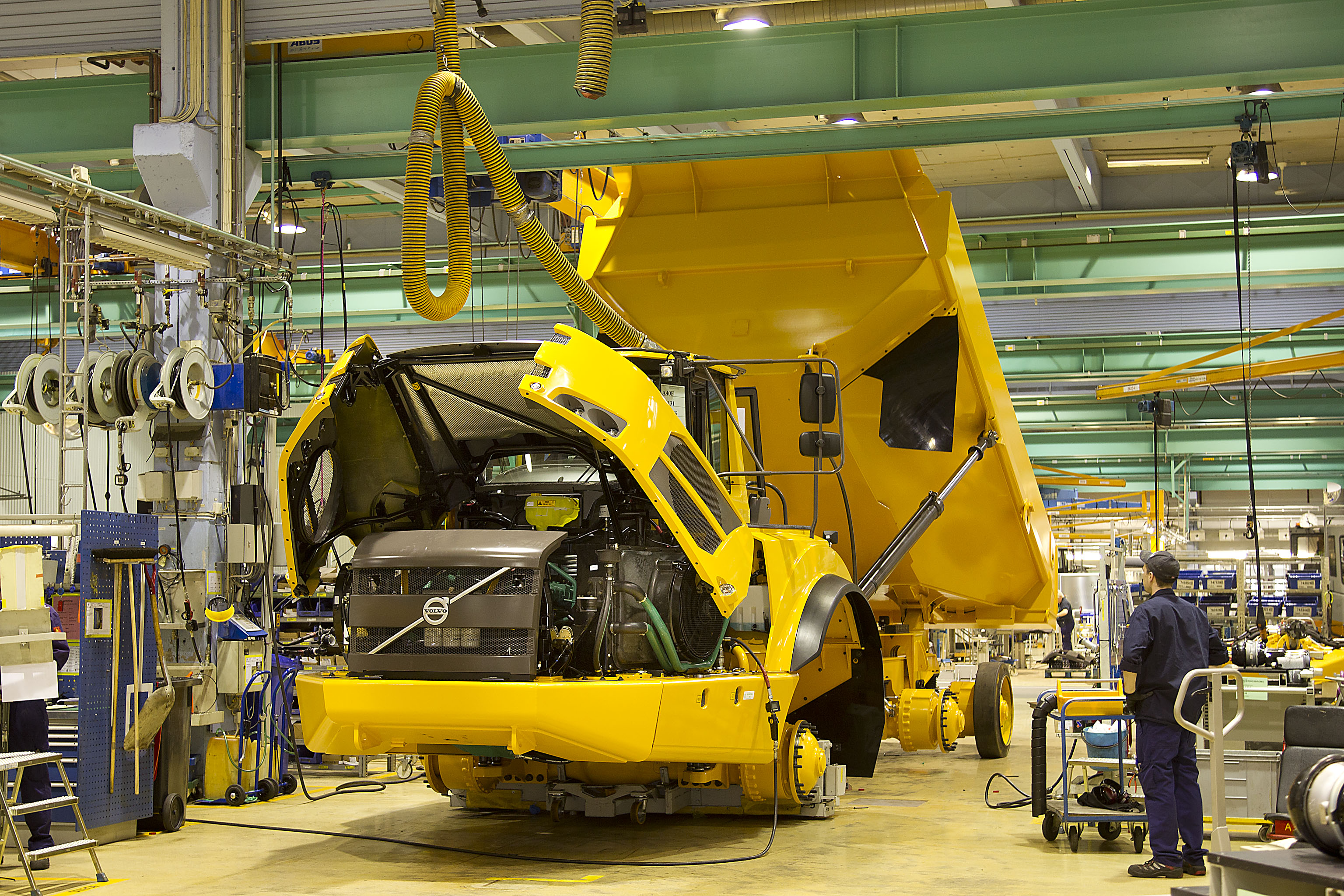
Volvo Construction Equipment’s site in Braås, Sweden becomes the company’s first carbon neutral premises and it says it is the first construction equipment production facility in the world to be powered entirely by renewable energy.
The 45,000m2 site in southern Sweden, which specialises in the design and manufacture of articulated haulers, is now powered entirely by renewable energy sources, including wind, biomass and hydropower, that neither produce harmful emissions nor contribute to the greenhouse effect.
The achievement follows in the footsteps of sister company Volvo Trucks, whose Ghent facility in Belgium set the standard for emissions-free industrial manufacturing in 2007.
“As one of our core values, environmental care informs everything we do at Volvo,” says Niklas Nillroth,
“So we are extremely proud that the Volvo Group is leading the way, not just in one industry, but two.”
Braås’ first step towards carbon neutrality began in 1999, when it commissioned local energy supplier Växjö Energi to install a district heating plant, fuelled by wood chips, to provide central heating for its employees and the town’s residents. Braås then joined a Volvo Group initiative in 2007 that saw it switch to green electricity generated from renewable sources.
Nillroth, who is based at the Braås facility, says: “Volvo CE is an important part of the community in the region so it is essential that our environmentally-conscious decisions benefit not only our customers and the world at large, but also our closest neighbors.”
These first two initiatives brought the site’s level of CO2 neutrality to 87% to 2008, with the final push to reach 100% beginning two years ago. Staff identified the greatest source of energy consumption as the liquefied petroleum gas (LPG) burners, which were used to heat the rust protection treatment ovens to 60°C. These were systematically replaced from September 2013 with district heating. The burners in the component paint shop, which reach temperatures of 120°C, were also altered to electrical heating. In addition, the site’s diesel forklifts were substituted with electric battery models.
Meanwhile, locals and the site’s 1,000 employees put pressure on Växjö Energi to run the district heating plant on biomass only: regular oil had previously also been used during peak times and maintenance.
“This is a tremendous achievement driven by the dedication and tenacity of employees at Braås,” says Nillroth. “But we couldn’t have achieved it without the ready availability of green power in Sweden and the support of our local community.”
The next step is to focus more on energy-saving activities, in particular, reducing the idling consumption at the site. One initiative will involve recycling waste heat from the treatment ovens and burners and using it to heat the buildings.
“We may not be pumping huge amounts of harmful CO2 into the atmosphere, but still, the less energy we consume, the better,” he says.
“Environmental care has, and will always be, a top priority for Volvo CE, and while Braås may be the first premises to achieve CO2 neutrality, all our sites are heading in the right direction, creating incremental improvements to our global footprint every day.









